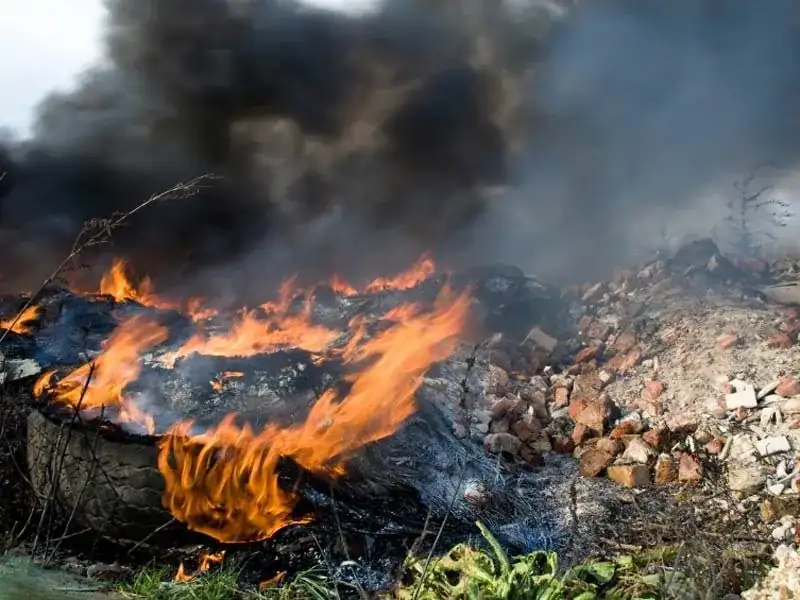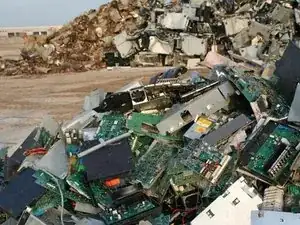Fix the planet
Electronic waste is the toxic legacy of our digital age.

The problem with e-waste
Many people don't know that electronics have all kinds of nasty chemicals in them. For example, the glass in a typical CRT has about ten pounds of lead in it. Most flat panel displays contain significant amounts of mercury. Plastic cases come coated with fire-resistant chemicals called poly-brominated flame retardants, some of the nastiest chemicals around. You can't just throw those kind of chemicals into a landfill because they contaminate soils and leach into the water supply.
What happens to e-waste?
To recycle electronics properly, you must carefully disassemble them and separate out each type of material. The raw materials can then be safely used to make new products. Unfortunately, that doesn't happen as often as you'd think. Many of the electronics that we think are "recycled" are simply shipped to the third world.
Why? It turns out that it's expensive to recycle e-waste properly. It's expensive because the process is labor-intensive, and it's expensive because (in the US, at least) environmental laws require e-recyclers to use environmentally friendly processes.

From UNEP/GRID-Arendal Maps and Graphics Library
But labor is cheap in the developing world. And those pesky environmental laws don't exist everywhere. Containers full of outdated electronics are regularly shipped to places like China and Nigeria where people scrounge through the dead electronics looking for bits and pieces that are useful. After scavengers pick out the worthwhile bits, 'extractors' start breaking things apart. They can make a living breaking down electronics harvesting copper from wires and gold from electrical connectors. But without environmentally friendly processes, the nasty chemicals from the extraction process seeps into the groundwater and remnant broken electronic scrap litter the landscape.
The United Nations Environmental program explains this process: "In many countries entire communities, including children, earn their livelihoods by scavenging metals, glass and plastic from old computers. To extract the small quantity of gold, capacitors are melted down over a charcoal fire. The plastic on the electrical cords is burnt in barrels to expose the copper wires. According to the Basel Action Network, all in all each computer yields about US $6 worth of material. Not very much when you consider that burning the plastic sends dioxin and other toxic gases into the air. And the large volume of worthless parts are dumped nearby, allowing the remaining heavy metals to contaminate the area."
How you can save the planet
Use devices as long as possible

Maintaining and repairing devices dramatically improves their usable lifespan. If we worked together and doubled the length of time the average piece of electronics was used, we could halve the amount of e-waste created. If we take care of our devices and fix them when they break, we can do a lot better than that.
You have a responsibility to humanity to keep things working as long as possible and to dispose of them properly. Being responsible is easy: sell or donate stuff you no longer need to people who can reuse it. Repair things you can still use, and recycle it when there's no use left.
Bridge the Digital Divide
Everyone should have access to technology. Modern communications brings people together and enriches lives. We’re proud to support the work of organizations like Partners Bridging the Digital Divide with repair know-how.
Join the crusade
Here's two quick things that you can do:
- Take our repair pledge and promise to repair your things instead of tossing them away.
- Learn more about the e-waste problem and then speak to a local group about how fixing things is the solution.
There is a finite quantity of resources on this planet. It's important we make efficient use of what we have and preserve resources for future generations. The Story of Stuff is a compelling 20-minute animated video that describes how our current production and consumption patterns are unsustainable.